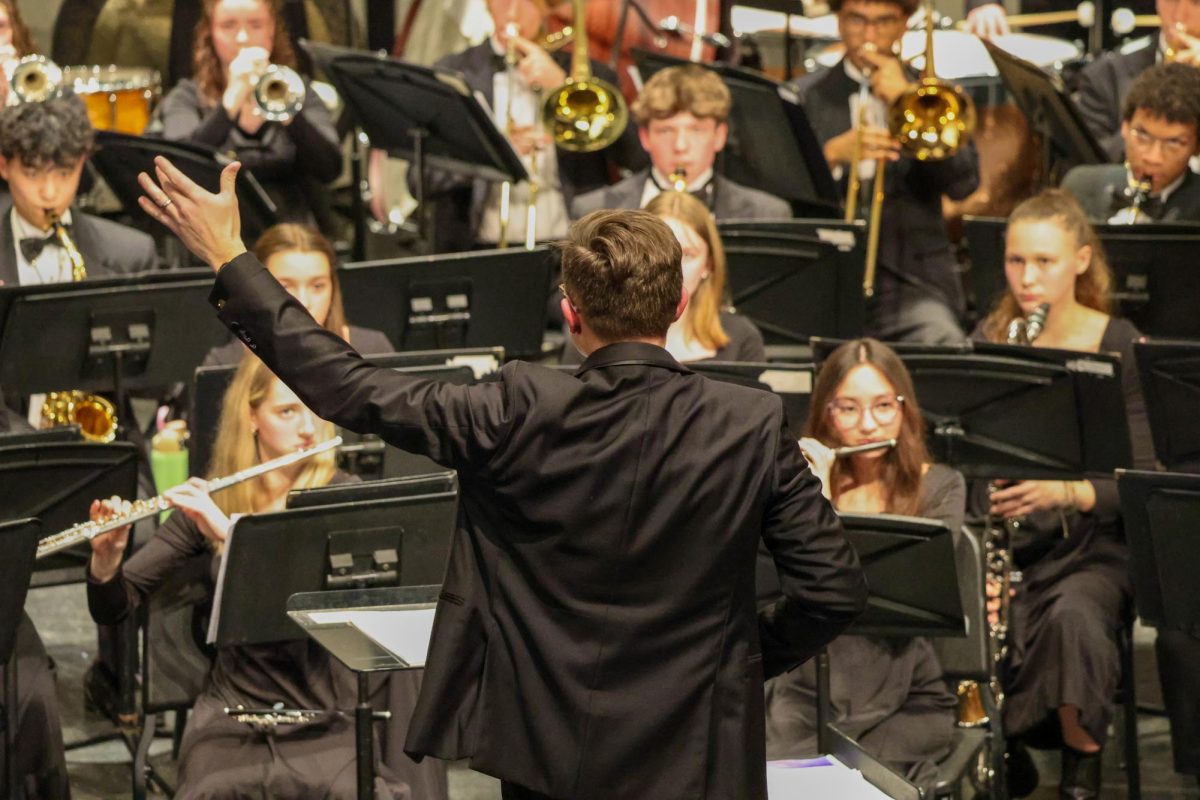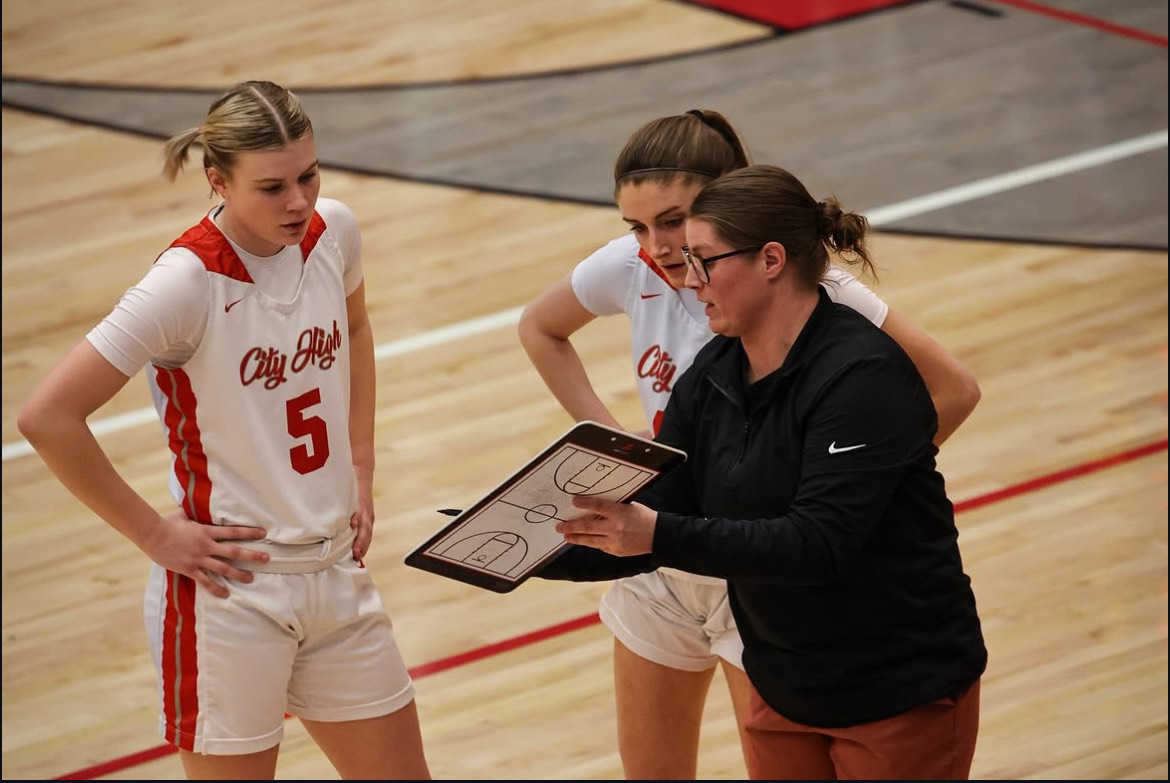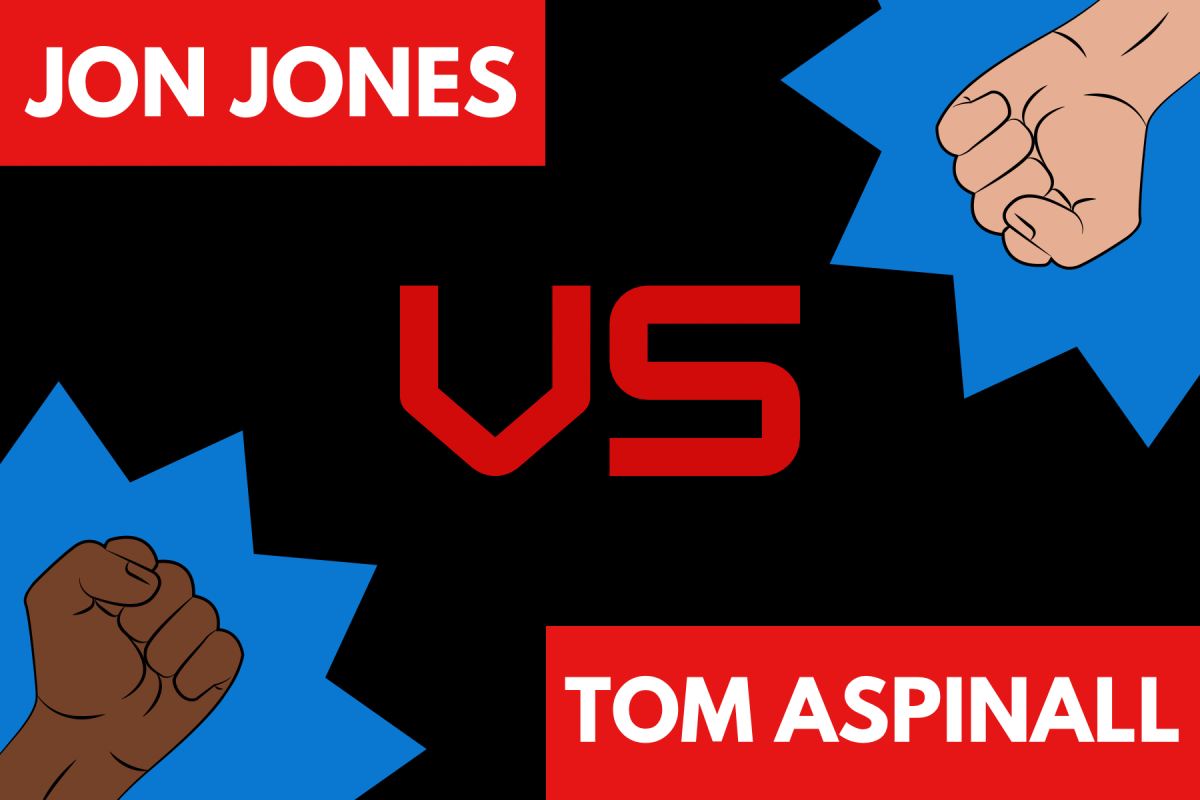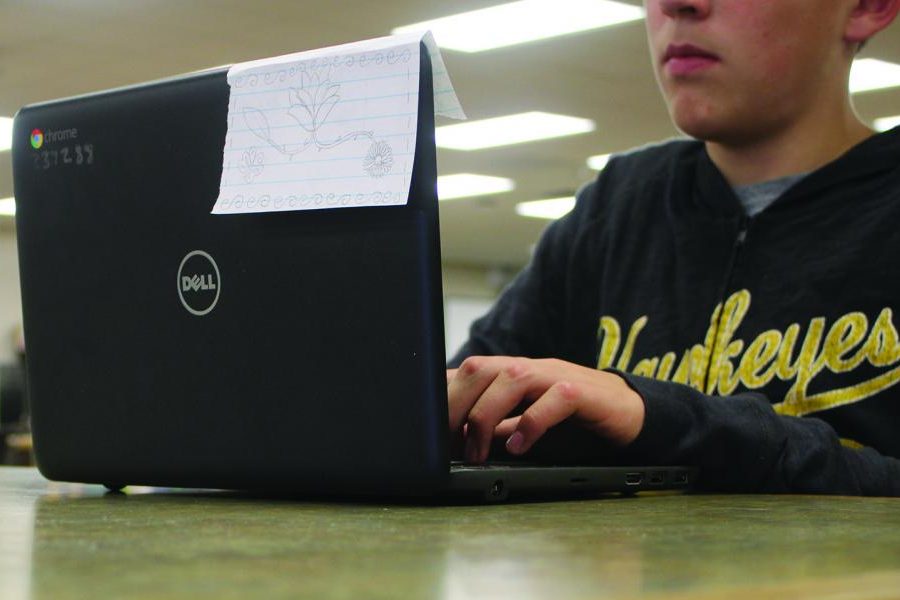One-To-One, Three Years Later
Now that City High has had Chromebooks for several years, how do the students and faculty feel about them?
Patrick Sarsfield ’22 using his Chromebook in the library.
November 12, 2019
In the year 2019, every student grades 7-12 in the Iowa City Community School District is given a Chromebook (a small laptop with limited functionality). This system was adopted in the 2016-2017 school year, in an attempt to make the classroom more digital.
As students have had time to adapt to a more electronic-based education system, most students have enjoyed the convenience of their Chromebooks.
“I enjoy [having my Chromebook] at home so I can do homework,” Alexander Seamans ‘20 said. “It makes stuff easier, but other than that, I think it’s just okay.”
Nadal Elmak ‘21 agrees with Seamans about the uses of Chromebooks.
“I think it is useful. If you ever have anything urgent, you can get your bag and get your chromebook to work on what you need to work on,” Elmak said.
The introduction of Chromebooks has enabled the use of new technologies for classes. The Chromebooks give students access to technology that they may not have had otherwise, due to lack of availability at home.
“They open up activities we wouldn’t be able to do. Things like Flipgrid or NoodleTools or whatever the latest app is. It’s really helpful to have access to those things all the time,” Alina Borger-Germann, an English teacher at City, said.
One of the main new things the Chromebook offers is having an electronic daily agenda.
“Every single day, my agenda is on Canvas. Before we had Chromebooks, I kept my agenda on a blog, because that was the only way I could communicate with students, but now that we have Canvas…I’ve migrated everything to Canvas. It’s kind of a one-stop shop for students,” Borger-German said.
Despite the applications that some classes are finding useful, it doesn’t come without drawbacks. Jason Schumann, a history teacher at City, finds that his students often find themselves off-track because of their Chromebooks.
“I think the thing that I find to be most challenging with the Chromebooks are the transitions. Going from an activity with Chromebooks [to one without] can be a struggle,” Schumann said.
However, some teachers believe that the Chromebooks aren’t the root of student’s distractions.
“I don’t think they’re very likely to get distracted with Chromebooks. I think they’re more often distracted by their personal devices,” Borger-Germann said.
Tom Schnoebelen, one of City’s chemistry teachers, agreed.
“It has been much better from my perspective this year than last year. If [something] is going to be a distraction, it’s going to be their cell phones as opposed to their Chromebook. This year, there were less distractions than what we had last year with Chromebooks,” Schoblen said.
Additionally, Chromebooks breaking can be a common problem seen in the tech room, and the cost of Chromebooks that City High distributes to students is around $150.
“We had so many broken laptops that kids brought in from over the summer,” librarian Daphne Foreman said. “Regardless of our situation, I think we would have struggled to turn it around right away. We’ve had many broken screens and we often have to wait for those to be supplied from the district.”
Many of the teachers at City High believed that the positives outweigh the potential downsides of the Chromebooks. Despite his initial opposition to Chromebooks, Schumann has started to come around.
“When the first discussion of Chromebooks came up, I was one of the naysayers,” Schumann said. “I do think at the end of the day it helps teach students 21st-century skills that are going to be necessary.”




































